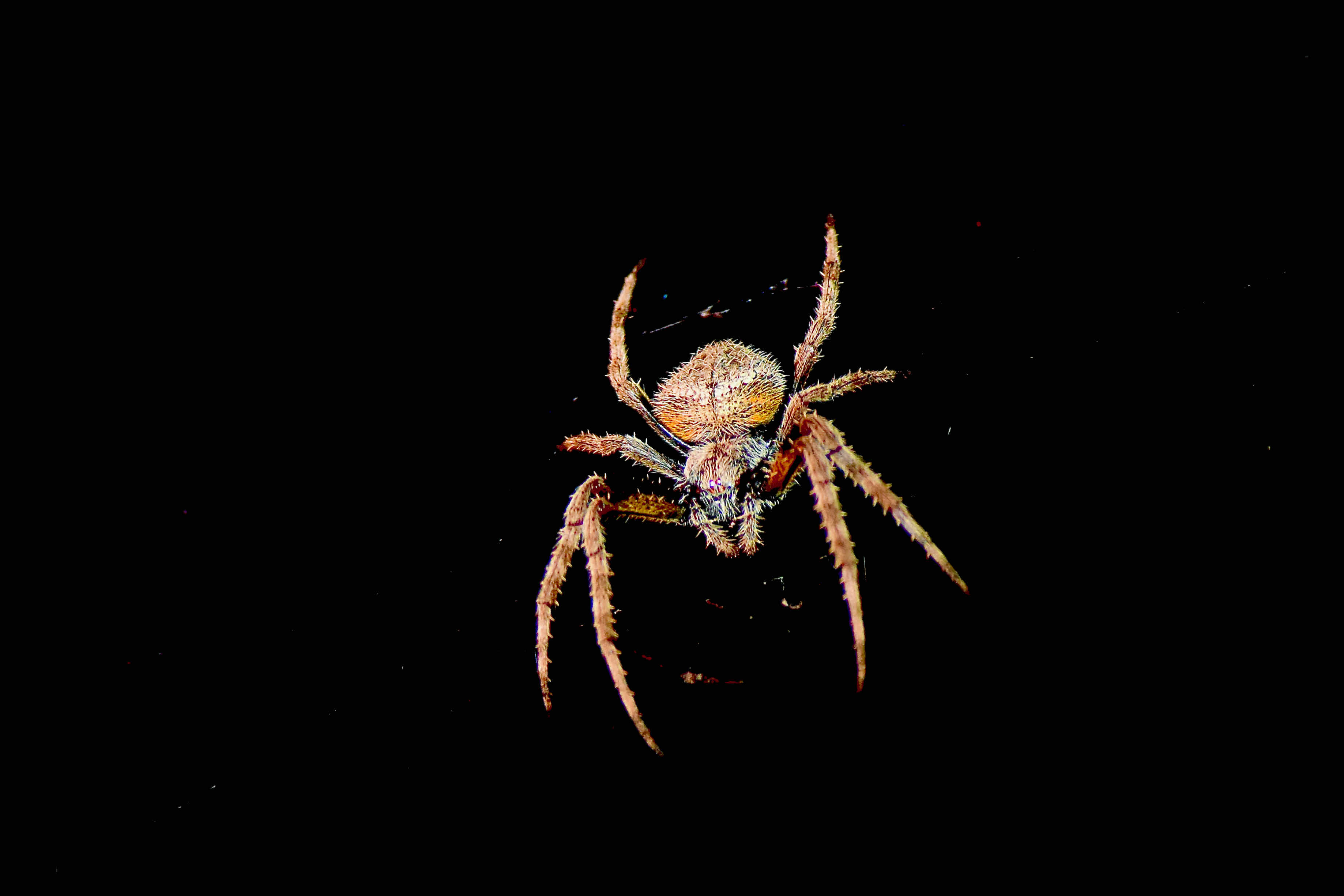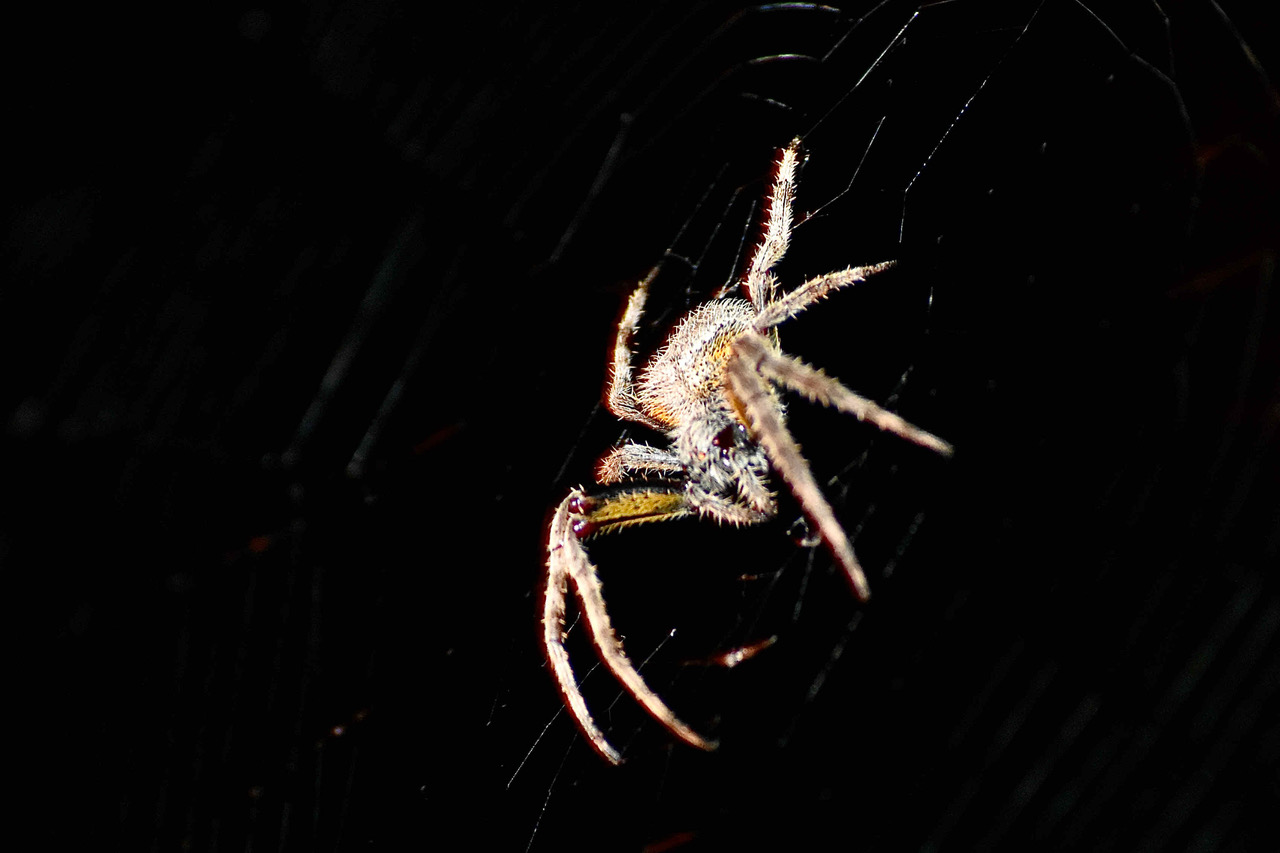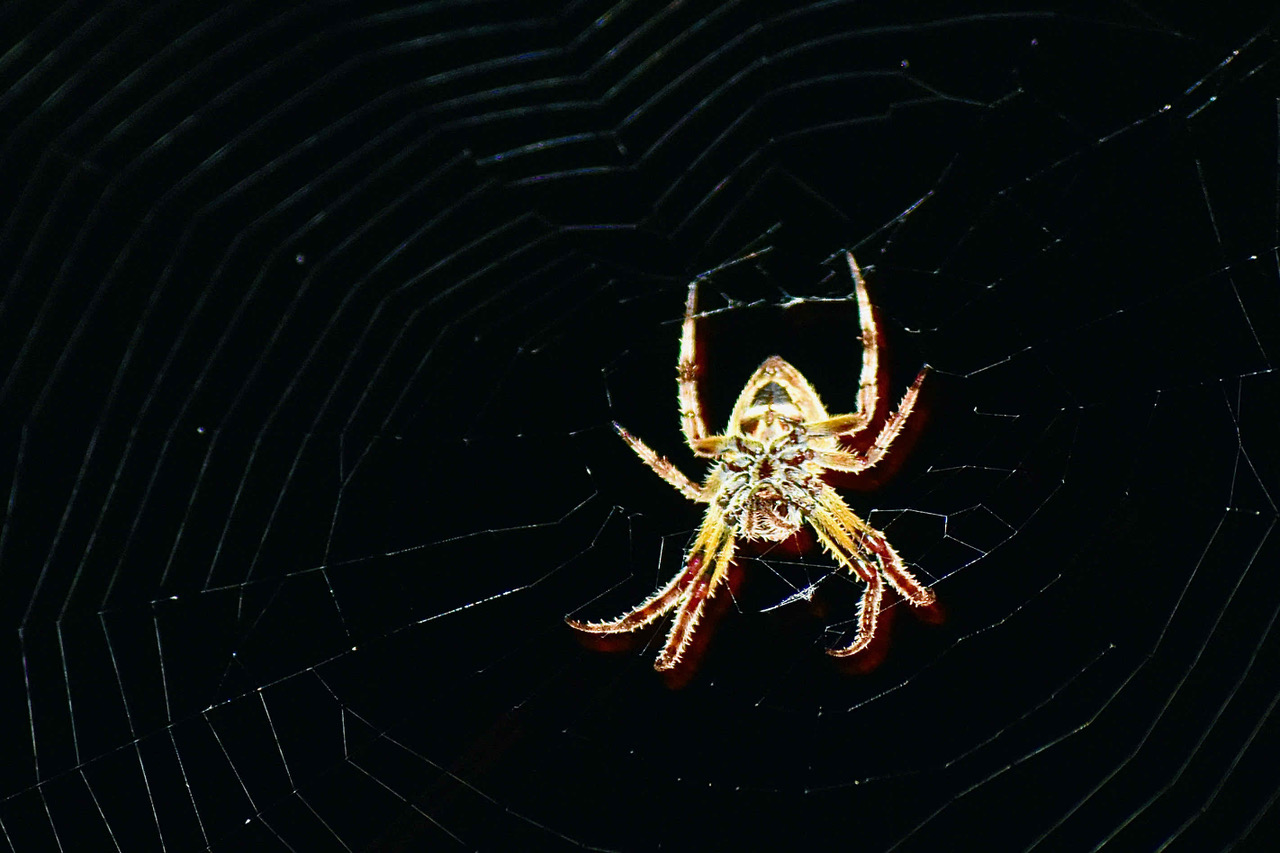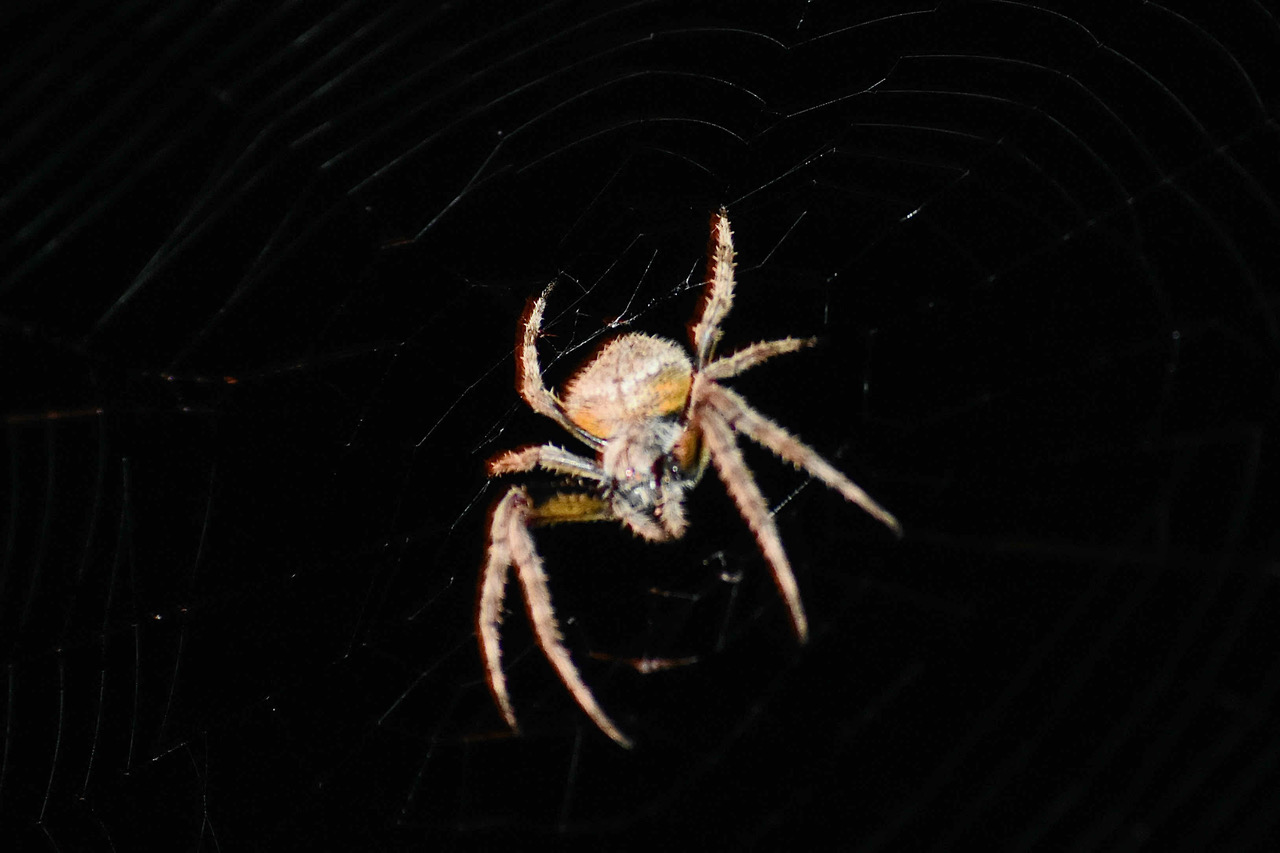
Tropical orb weaver, photographed at western Delray Beach, Palm Beach County, in August 2022.
Now you see it; now you don’t. The tropical orb weaver has a magic act.
Well, sort of.
The spider, scientifically known as Eriophora ravilla, builds its web after dark each night, only to tear it down before dawn, then rebuild it the next night. And their webs can be absolutely huge. Night after night after night.
We first encountered the tropical orb weaver one night while taking out organic waste to our compost pile. We spotted it in its web in the light of a flashlight. Cool, we thought, vowing to come back in daylight and grab a photo of the critter, not knowing what it was or how it rolled. And when we returned the next morning, there was no sign of him. Or more precisely, her, puzzling and disappointing us.
A year or so later, we spotted one in the glare of our security light. Not taking any chances, I grabbed my camera and took the photos that appear on this page.
Tropical orb weavers are large spiders. The body of an adult female can approach an inch in length, plus it’s long, long legs. Males go about half that size, more or less.
Generally, they’re brown in color — in Florida, mostly reddish brown — with some white or yellow mixed in. Tropical orb weavers also can be almost white or almost black. The thorax is absolutely huge in proportion to its head.
The web has a main thread that can be as long as 18 feet or more, plus an outer frame and interior webbing, intended to catch moths, mosquitos and other night-flying insects. Meanwhile, the resident spider positions herself in the center. By morning, all evidence of the web will be gone. She might leave the main thread and the frame might up, if you can spot them, but the interior will be as if it never existed.. Meanwhile, the tropical orb spider spends her day wrapped up in the underside of leaf that’s tied together with silk waiting for sundown to begin the process again.
Because of their nocturnal habit, tropical orb weavers aren’t as conspicuous or generally as well known as other large orb weavers like the banana spider, aka golden orb weaver. But they are out there waiting for night to fall.
The native range of the tropical orb weaver includes Florida, Louisiana and Texas, down through Mexico, Central America, into Colombia and Venezuela and the Caribbean. They’ve been found as far north as Maryland and as far south as Brazil.
Despite their intimidating size, they’re little threat to us humans. On the rare occasion they do bite, there can be some pain and swelling, but that will go away in an hour or two.
Tropical orb weavers are members of Araneidae, the orb-weaver spider family.



